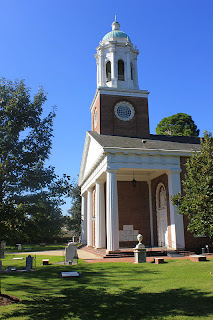Established in the the Fall of 1818, the Magnolia Cemetery is one of the oldest and most unique cemeteries of Georgia.


As morbid as this may sound, I have always been fascinated with exploring in cemeteries. I don't quite understand where the idea of how cemeteries are haunted and a space filled with evil spirits. To me, there is only the sense of Peace, a lasting tribute to lives of our Forefathers, a Sanctuary to the times Past and the place where Memory of it's Community live on. This to me, is anything but haunted. The Magnolia Cemetery spans 60 acres of what once was a plantation which laid at the edge of the early 19th century river city of Augusta, but today lies near the downtown.

 The Magnolia Cemetery brings together various communities of Augusta. Within the walls of the cemetery are numerous Christian denominations, multiple Jewish areas, a Greek sector, and a section dedicated to the Confederate Dead. You can read all the books that you want. You can visit every battlefield you find. You can watch what ever documentary you come across on the History Channel. Although, none of those can make you stop and ponder, "Who was this? What was his story?" It is a chilling experience to see the marker of a grave to a soldier. The question I always ask myself when I look down upon the stone that lay at my feet, "What were they fighting for?" That is getting in touch with History.
The Magnolia Cemetery brings together various communities of Augusta. Within the walls of the cemetery are numerous Christian denominations, multiple Jewish areas, a Greek sector, and a section dedicated to the Confederate Dead. You can read all the books that you want. You can visit every battlefield you find. You can watch what ever documentary you come across on the History Channel. Although, none of those can make you stop and ponder, "Who was this? What was his story?" It is a chilling experience to see the marker of a grave to a soldier. The question I always ask myself when I look down upon the stone that lay at my feet, "What were they fighting for?" That is getting in touch with History.
The area of the cemetery where I shot these photos range in the time frame of the American Civil War and continue up to the turn of the 20th century. The dates seem to stop around the time of World War I, which I have been trying to discover what happened to the Hebrew Benevolent Society in Augusta. More to come hopefully...
















































